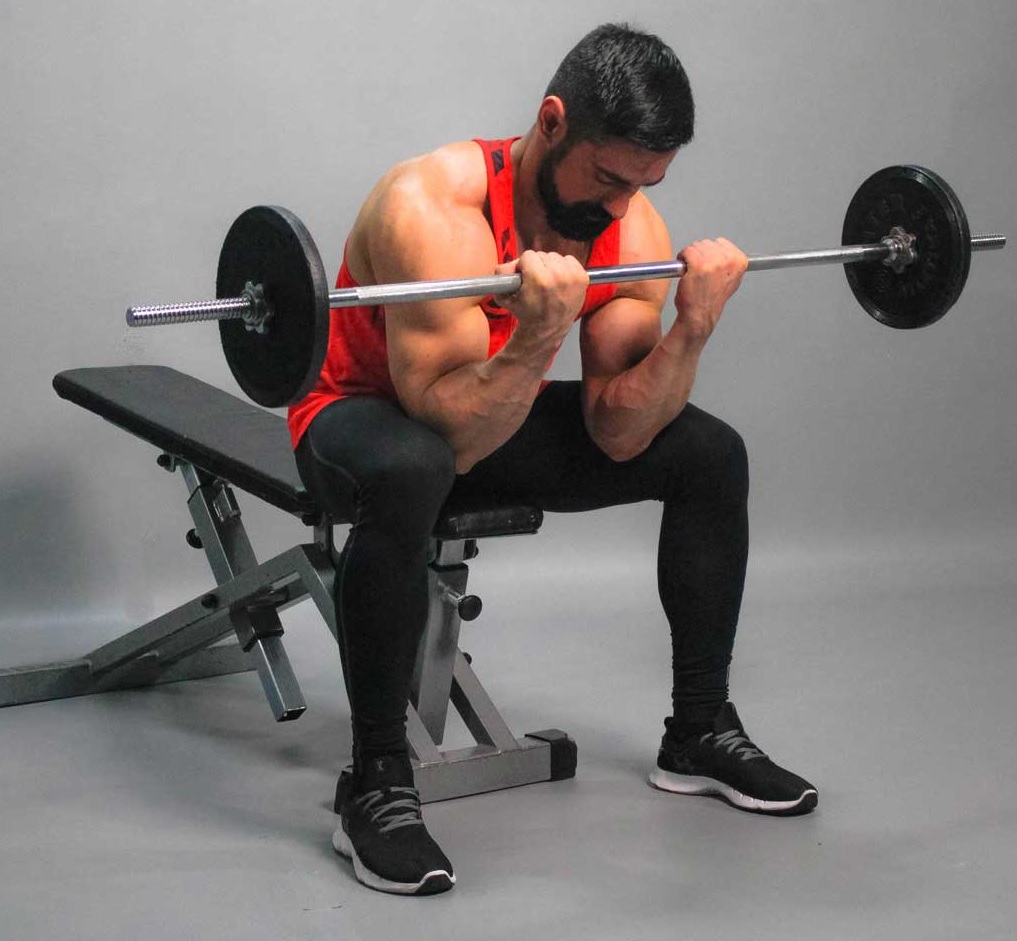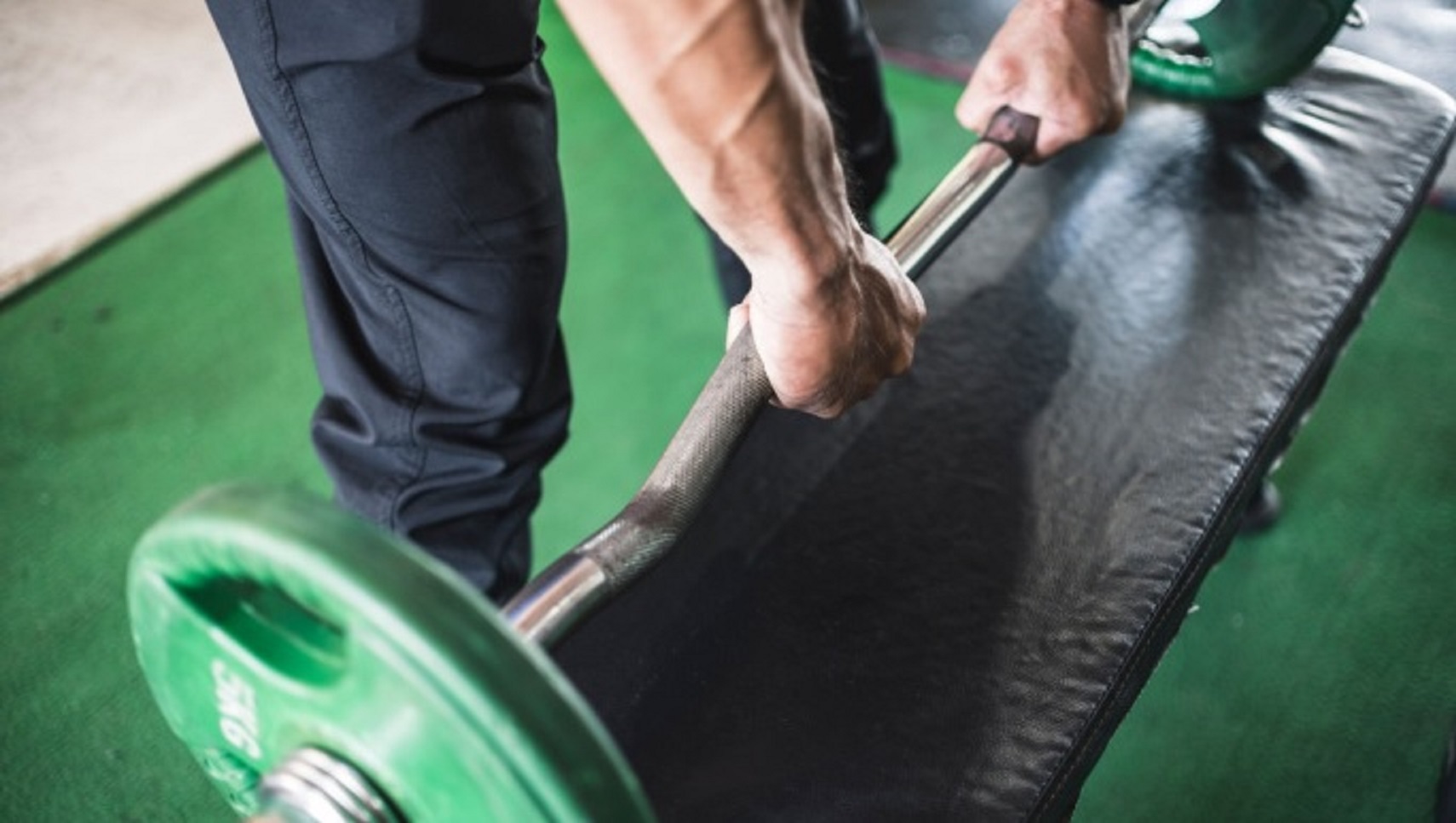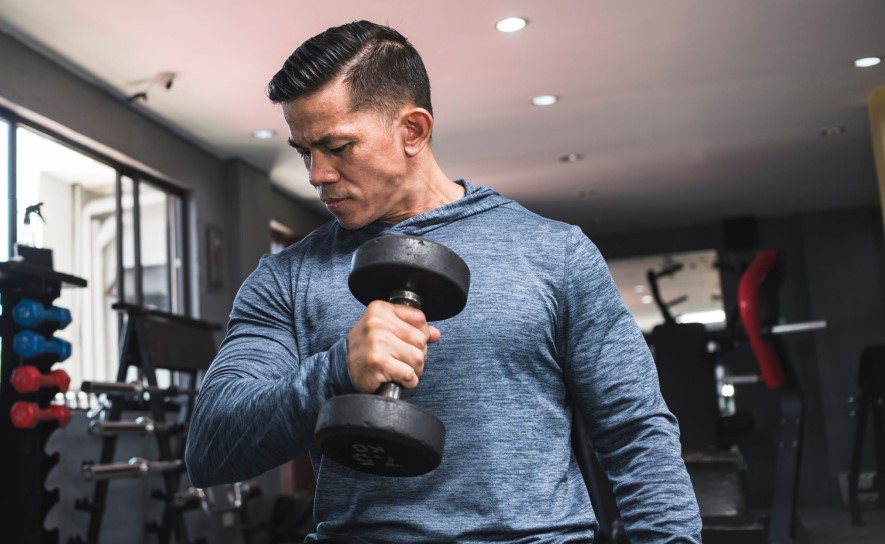- When it comes to building impressive biceps, it’s not just about lifting weights but also about selecting the right exercises.
- In this guide, we will delve into a series of bicep exercises that not only target your biceps effectively but also provide a fresh perspective on traditional movements.
- With these exercises, you’ll be able to stimulate muscle growth and make progress toward your fitness goals.
I. Seated Easy Bar, Drag Curl
In the pursuit of well-defined and strong biceps, the choice of exercises can make all the difference. The seated easy bar drag curl is a unique and effective addition to your bicep workout routine, and it deserves a closer look. Let’s explore this exercise in more detail:
Eliminating the Initial Drag Curl Phase:
- The seated easy bar drag curl offers a distinct advantage by eliminating the initial phase of the drag curl. In a traditional drag curl, this initial part of the movement often results in a suboptimal form.
- The seated version simplifies the exercise by removing the rolling pin feeling, reducing strain, and making it more accessible and form-friendly.
Resting the Biceps:
- A notable feature of the seated easy bar drag curl is the opportunity it provides to fully rest your biceps at the bottom of each repetition.

- While it’s commonly recommended to maintain constant tension during resistance exercises, this exercise takes a different approach.
- Allowing brief moments of rest at the bottom creates an environment where you can truly push your biceps to failure and beyond.
Failure and Muscle Growth:
- Pushing your muscles to failure is a crucial aspect of muscle growth. It’s at the point of failure that your muscles are forced to adapt and grow stronger. The seated easy bar drag curl is designed to encourage this process.
- When you reach the point where you can’t lift the bar any further, you have to roll it off your legs, signifying that you’ve pushed yourself to the limit. This built-in mechanism ensures that you’re not holding back and that you’re truly challenging your biceps with each repetition.
The Exception to Constant Tension:
- While maintaining constant tension during resistance exercises is a standard recommendation for muscle building, the seated easy bar drag curl stands as an exception.
- The brief pauses at the bottom of each repetition in this exercise create a distinct training stimulus that can be your ticket to overcoming plateaus and achieving substantial muscle growth.
It’s a potent and innovative addition to your bicep routine. If you’re new to this exercise, prioritize maintaining proper form, and consider consulting a professional for guidance.
II. Pronated Grip Negative Drags:
- Pronated grip negative drags are a potent variation designed to intensify your bicep training.
- However, there’s a catch – maintaining proper form is paramount. The challenge lies in ensuring that as you focus on lifting heavier weights, your form doesn’t deteriorate. It’s not about simply moving more weight; it’s about doing so with precision and control.
- The term “pronated grip” signifies that your palms are facing down or away from your body as you perform the exercise.
- The process starts with the curling phase – lifting the weight with exacting precision, focusing on the target muscle group, the biceps.

- This exercise’s most important aspect is the eccentric phase, which highlights the need to maintain good form as you lower the barbell. During this phase, your focus should be on pulling the bar toward your chest while ensuring it smoothly glides along your body.
- This phase is where the real magic happens; it’s the eccentric portion that will challenge your biceps and contribute significantly to muscle growth.
- When executed with an unwavering focus on form, pronated grip negative drags transform into a phenomenal bicep builder. They not only intensify your training but also provide a unique stimulus to your biceps.
- The eccentric phase, in particular, is where your muscles experience maximum tension, contributing to muscle fiber breakdown and growth.
III. Pinwheel Curl:
- Sometimes, in the world of fitness, you encounter exercises with odd names that leave you scratching your head.
- The pinwheel curl is indeed an exercise with a peculiar name, but its benefits are crystal clear. Despite the peculiar name, it consistently delivers outstanding results.
- Let’s first address the common pitfalls of conventional curls.

- As individuals progress through their workout, fatigue often sets in, leading to deviations in form. It’s a frequent sight to see people inadvertently involving their elbows, swaying them back and forth during curls.
- This unintentional action can undermine the exercise’s effectiveness and affect your progress.
- The pinwheel curl emerges as a solution to these problems, simplifying the curling motion, making it both approachable and incredibly efficient.
- No longer do you need to grapple with intricate techniques or struggle with elbow deviations.
- The essence of the pinwheel curl is straightforward: draw a straight line from your hand to your armpit.
Precision and Focus: When you perform the pinwheel curl, your objective is clear—curl straight up and, at the pinnacle of the movement, rotate your wrist. This minimalistic approach ensures precise and focused targeting of specific muscle groups. In particular, the brachialis muscle becomes the center of attention, almost like a laser zeroing in on its target.
IV. Unilateral Hammer Curl Variation:
- With arm training, the hammer curl stands as a classic, tried-and-true exercise.
- However, when you are looking for constant improvement, it’s essential to approach even the classics with fresh perspectives.
- This exercise’s most important aspect is the eccentric phase, which highlights the need to maintain good form as you lower the barbell.

Unilateral Training: One of the key distinctions in our hammer curl variation is the adoption of unilateral training. Instead of wielding two dumbbells simultaneously, we shift our focus to one arm at a time. This shift adds a welcome change to your routine and has the potential to significantly impact your arm development.
The Shoulder Rotation Secret: What truly sets this hammer curl variation apart is the incorporation of a unique shoulder rotation. As you initiate the curling movement, your elbow remains stable. However, the magic happens in the wrist and shoulder. By rotating your wrist during the curl, you accentuate the engagement of the long head of the brachialis muscle.
Enhancing Effectiveness: This variation isn’t just about diversification; it’s about maximizing the effectiveness of your hammer curls. The deliberate wrist rotation during the movement ensures that your brachialis muscle receives precise and targeted stimulation. Over time, this can result in noticeable and satisfying growth of this frequently neglected muscle group.
Bicep Workout Benefits
- Diversifying Your Training: Incorporating different exercises challenges your muscles in new ways, preventing adaptation and promoting continuous growth.
- Maximizing Muscle Growth: These exercises target various aspects of bicep development, leading to more balanced and comprehensive growth.
- Enforcing Strict Form: Emphasizing proper form minimizes the risk of injury and ensures efficient workouts.
- Quality and Precision: These exercises encourage careful, precise execution, enhancing muscle engagement and muscle-mind connection.
To make your fitness journey more accessible, you’ll find sets and reps details in the description below. These guidelines serve as a roadmap to help you navigate these unique exercises. Whether you’re a seasoned gym-goer or just starting on your fitness path, the gains await those who dare to embrace a fresh perspective on training.









